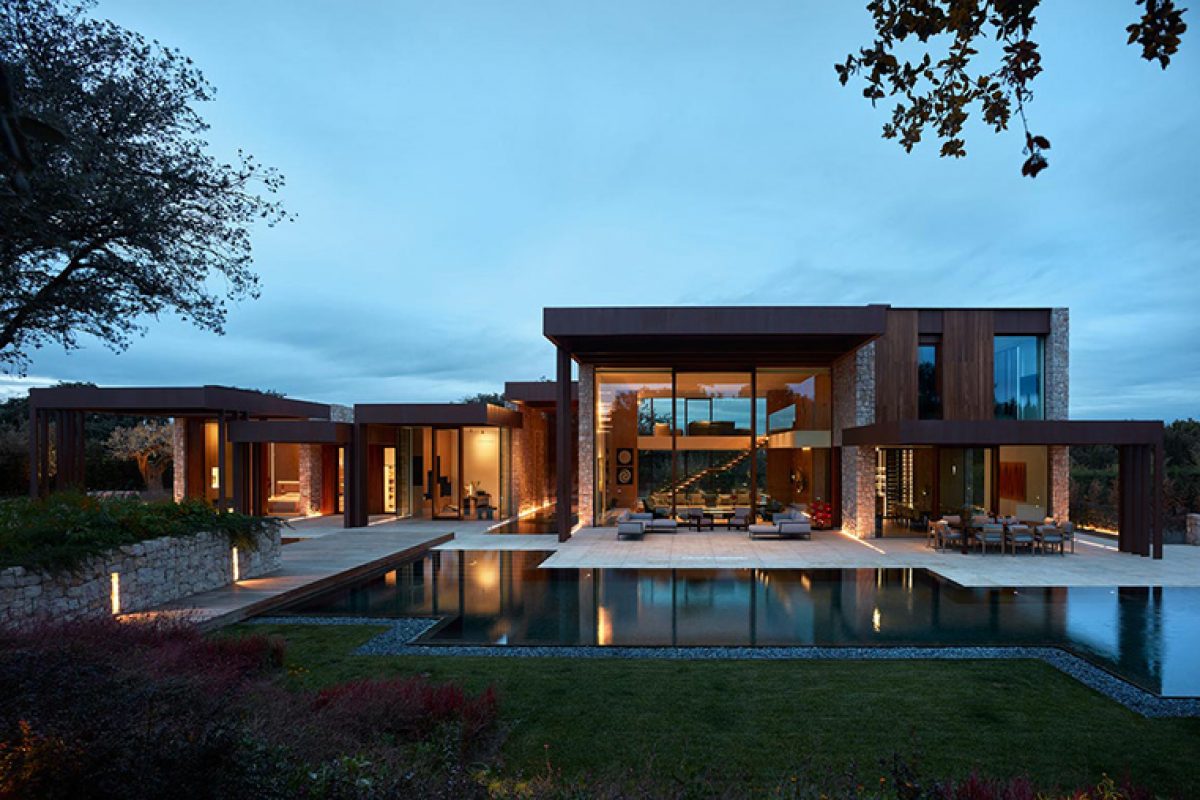Ramón Esteve designed a house for contemplation in the the mountains of Madrid

Surrounded by lush vegetation, the design of La Finca is fragmented into several volumes that flow into a lake. Ramón Esteve Estudio explains how carried out this architectural project created for contemplation
This house is located in a residential area of the mountains of Madrid, where the vegetation is so lush that it becomes very important. The plot borders a lake that the house opens to. The presence of some ancient holm oaks spread over the plot generates the location and shape of the dwelling. Thus the design process is thoroughly bound to the place. The building sets back to respect the largest trees, thus giving them a leading role. The access to the house is dominated by the largest holm oak. It arranges the entrance, welcomes the visitor and gives the house a stately presence. Two other oaks generate a roundabout that organises the access by car. 


The design process started with the fragmentation of the building in several boxes extended by Cor-Ten steel canopies. This extension allows the house to broaden outwards generating a large terrace. Each box has a different height according to the room that it hosts. This hierarchical organisation of the rooms gives the main façades rhythm and movement. 


The lobby that gives access to the house is a space of transition where the interior and the exterior meet. The external pavement crosses through the house and ends by a lengthwise sheet of water that is visually connected to the swimming pool. The boundaries are blurred by the presence of the same exterior material. This room also works as a filter between the daytime public area and the night-time private area of the house.
Its highly tectonic character binds together the building and its immediate surroundings. The huge masonry walls link it to the ground. The wood and the Cor-Ten steel recall the trunks of the holm oaks and the vegetation of the mountains of Madrid. The colour of the long swimming pool recalls the lake that borders the house. The roughness of the external skin of the house contrast the balance and brightness of the interior, where the colour of wood is lighter and the space is dominated by white and neutral colours. 


The building has got only one storey, which is very high, so the scale of the space becomes larger. The wide double-height living room is dominated by a sculptural staircase leading to the bedrooms area. The bedrooms are on the first floor of the only part of the building that has two storeys. The building includes a large basement that gets natural light because of the slope of the ground.
The wine cellar takes an important role in the project. We discover this glass room gradually while descending the stairs. The most special bottles are placed on bronze-finished metal posts as if they were in a display case. The wine cellar has a special temperature control that keeps the wine in the best conditions for its conservation. 



The house is presented as an art gallery that houses pieces in most rooms. Even on the walls of the garage, where we can admire an intervention by the artist Remi Rough, as well as a sculpture by Fred Wilson.
TECHNICAL DATA SHEET
Location | Madrid, Spain
Year | Under construction
Area | 1360 m2
Architect: Ramon Esteve
Project team: Anna Boscà, Estefanía Pérez, Jacobo Mompó
Collaborators REE: Tudi Soriano
Interior Design: Ramón Esteve, Violeta Lekutanoy (ID Atelier)
Technical Architect: Emilio Pérez, Carolina Tarazona
Art Consultant: Violeta Lekutanoy
Constructor: Moguerza Construcciones
Project Manager: Victoria Pérez, Juanjo Herranz
Project: 2016
Photography: Mariela Apollonio
Source: Ramon Esteve Estudio
Read more news related Ramón Esteve published at Infurma
Visit the Ramón Esteve Estudio website
News Infurma:
Online Magazine of the International Habitat Portal. Design, Contract, Interior Design, Furniture, Lighting and Decoration
